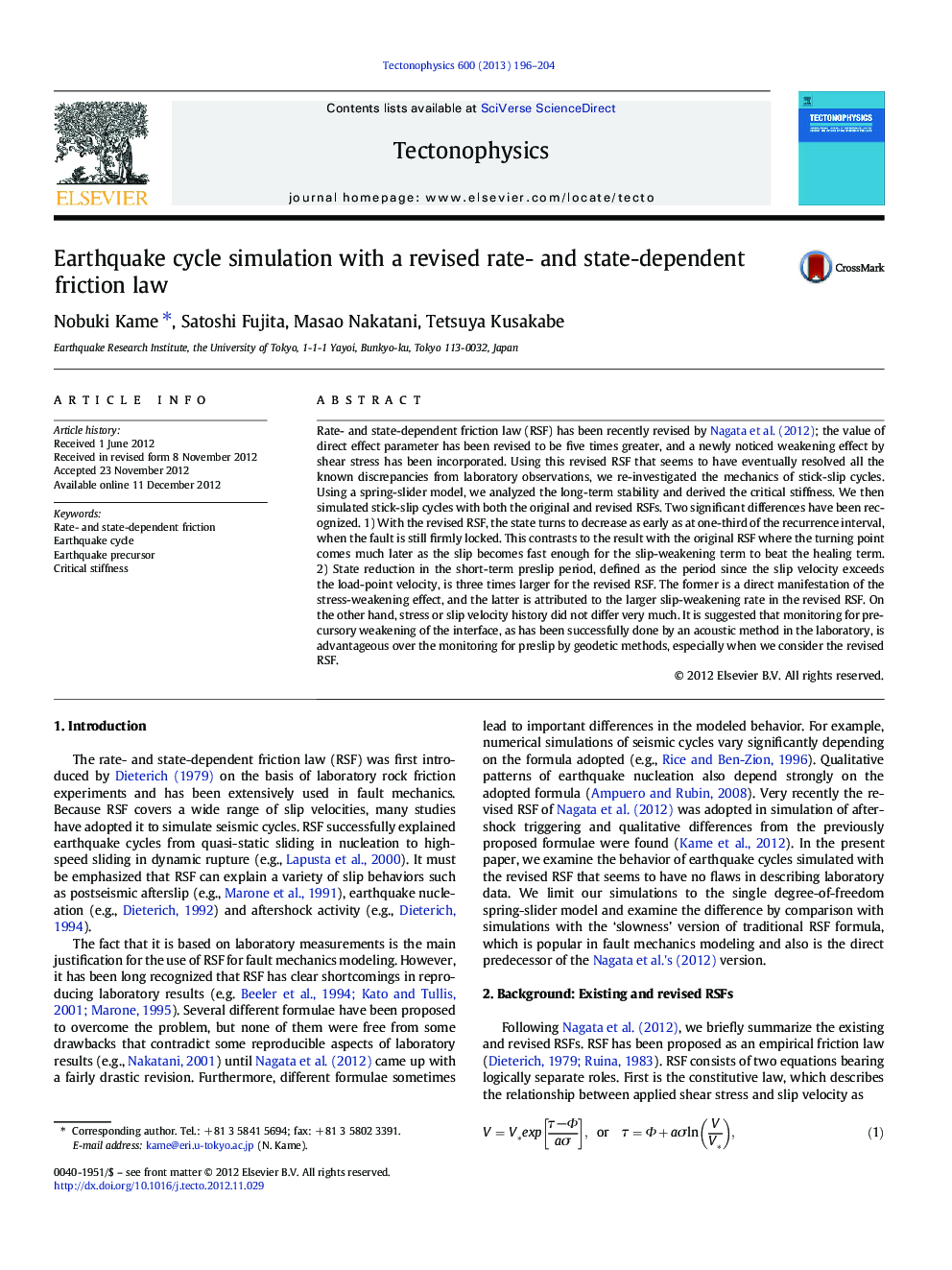| کد مقاله | کد نشریه | سال انتشار | مقاله انگلیسی | نسخه تمام متن |
|---|---|---|---|---|
| 4692230 | 1636787 | 2013 | 9 صفحه PDF | دانلود رایگان |
Rate- and state-dependent friction law (RSF) has been recently revised by Nagata et al. (2012); the value of direct effect parameter has been revised to be five times greater, and a newly noticed weakening effect by shear stress has been incorporated. Using this revised RSF that seems to have eventually resolved all the known discrepancies from laboratory observations, we re-investigated the mechanics of stick-slip cycles. Using a spring-slider model, we analyzed the long-term stability and derived the critical stiffness. We then simulated stick-slip cycles with both the original and revised RSFs. Two significant differences have been recognized. 1) With the revised RSF, the state turns to decrease as early as at one-third of the recurrence interval, when the fault is still firmly locked. This contrasts to the result with the original RSF where the turning point comes much later as the slip becomes fast enough for the slip-weakening term to beat the healing term. 2) State reduction in the short-term preslip period, defined as the period since the slip velocity exceeds the load-point velocity, is three times larger for the revised RSF. The former is a direct manifestation of the stress-weakening effect, and the latter is attributed to the larger slip-weakening rate in the revised RSF. On the other hand, stress or slip velocity history did not differ very much. It is suggested that monitoring for precursory weakening of the interface, as has been successfully done by an acoustic method in the laboratory, is advantageous over the monitoring for preslip by geodetic methods, especially when we consider the revised RSF.
► We simulated earthquake cycles using a recently revised rate and state friction law.
► A large accelerating strength drop is expected as a short-term precursor.
► Long-term strength drop starts as early as at 1/3 of the earthquake cycle.
► Preslip remains as small as that expected of the traditional friction law.
► These features are robust characteristics of the revised friction law.
Journal: Tectonophysics - Volume 600, 17 July 2013, Pages 196–204
